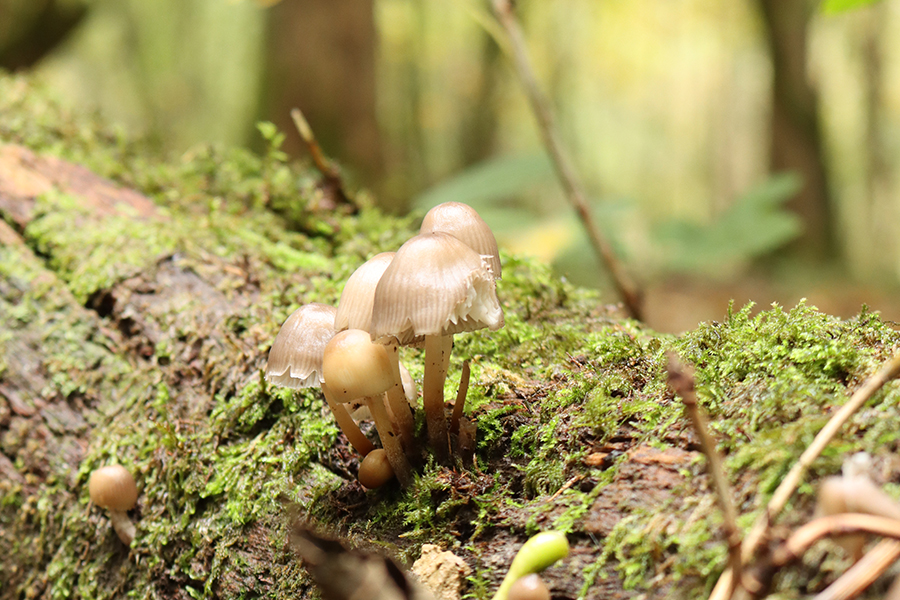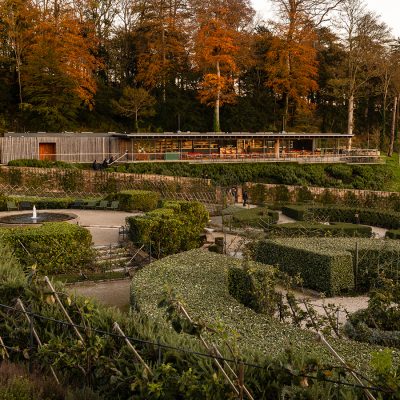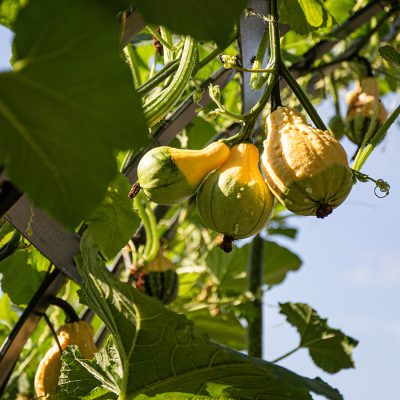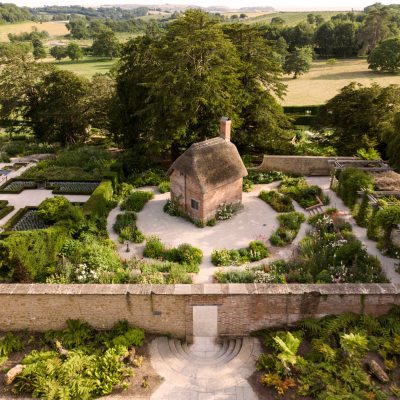Earthly Delights
October 26th, 2020Across the British countryside, woodland, grassland and riverbanks sit atop hidden kingdoms of buried treasure. Mycelial networks hidden from view until just the right moment, when temperatures drop and fruiting bodies of funghi flourish from beneath the ground.
There are around 15,000 species of wild mushroom in the UK. The most common edible species to be found in our woodland are: Oyster; Chanterelle; Field; Jelly Ear; Penny Bun; Razorstrop Fungus; the affectionately named Giant Puffball, and curiously named Chicken of the Wood.
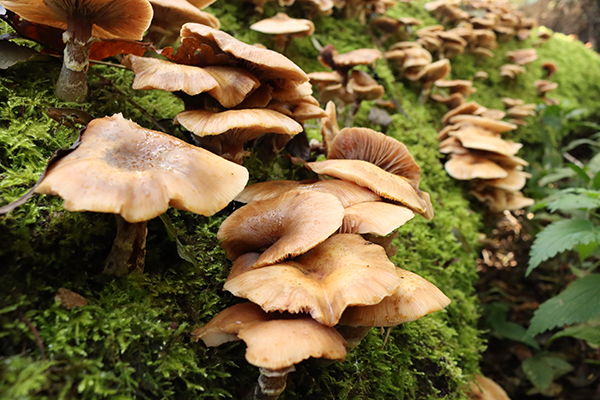
Our chefs and growers have been making the most of this short window in the calendar, with twice-weekly foraging trips. Among their bounty is the Honey Fungus (Armillaria melle); not merely a tasty morsel but an important part of the woodland ecosystem, breaking down dead wood and recycling it back into the soil.
As with most wild mushrooms, it is best to cook Honey Fungus thoroughly to avoid any stomach upset; and of course, to know exactly what you’re picking. Pick them when they are firm, boil for approximately 5 minutes, pan fry in butter and pile onto hot toast.
While our chefs work with the seasons, they don’t let their menus be dictated by them. Why not cultivate mushrooms all year round? All you need is conditions that carefully mimic the woodland floor. A fruiting chamber of secrets. A Mushroom House.
See below to find out more about the varieties growing in our Mushroom House, which are used in our kitchens and will soon be available to add to your fresh deliveries. How delightful.

Inside the Mushroom House
What makes a happy home for a mushroom? The temperature must be set to 18-20°C and humidity above 80%. From beds of straw and sawdust, inoculated with mushroom spawn that forms mycelial networks, mushrooms will start to wake and appear.
We harvest from these straw blocks daily; each one producing several kilos of mushrooms until it is composted and the nutrients returned back into the ecosystem.
The varieties we grow vary from month to month, but include:
Grey Oyster aka ‘Tree Oyster’
(Pleurotus ostreatus)The foragers’ choice found growing in tropical conditions all over the world – and right here in Somerset. With a rich, almond-like flavour, it is a rich source of potassium, niacin and vitamin C.
Pink Oyster aka ‘Flamingo Oyster’
(Pleurotus djamor)
Thrillingly pink with a meaty texture, the Pink Oyster contains high amounts of protein – making it a tasty replacement for chicken or seafood.
Lion’s Mane
(Hericium erinaceus)
A mane of tumbling white spines offers a unique texture, but this sweet scented mushroom is most renowned for its medicinal properties.
Shiitake
(Lentinula edodes)
Grown and loved in temperate regions of Asia for more than a thousand years, this fragrant, buttery and wonderfully versatile mushroom is a favourite with our chefs.
Pioppino mushroom
(Agrocybe aegerita)
Found growing prolifically in large clusters on deciduous wood debris throughout Europe, China and North America, the Pioppino is high in protein, copper and vitamin B5.
